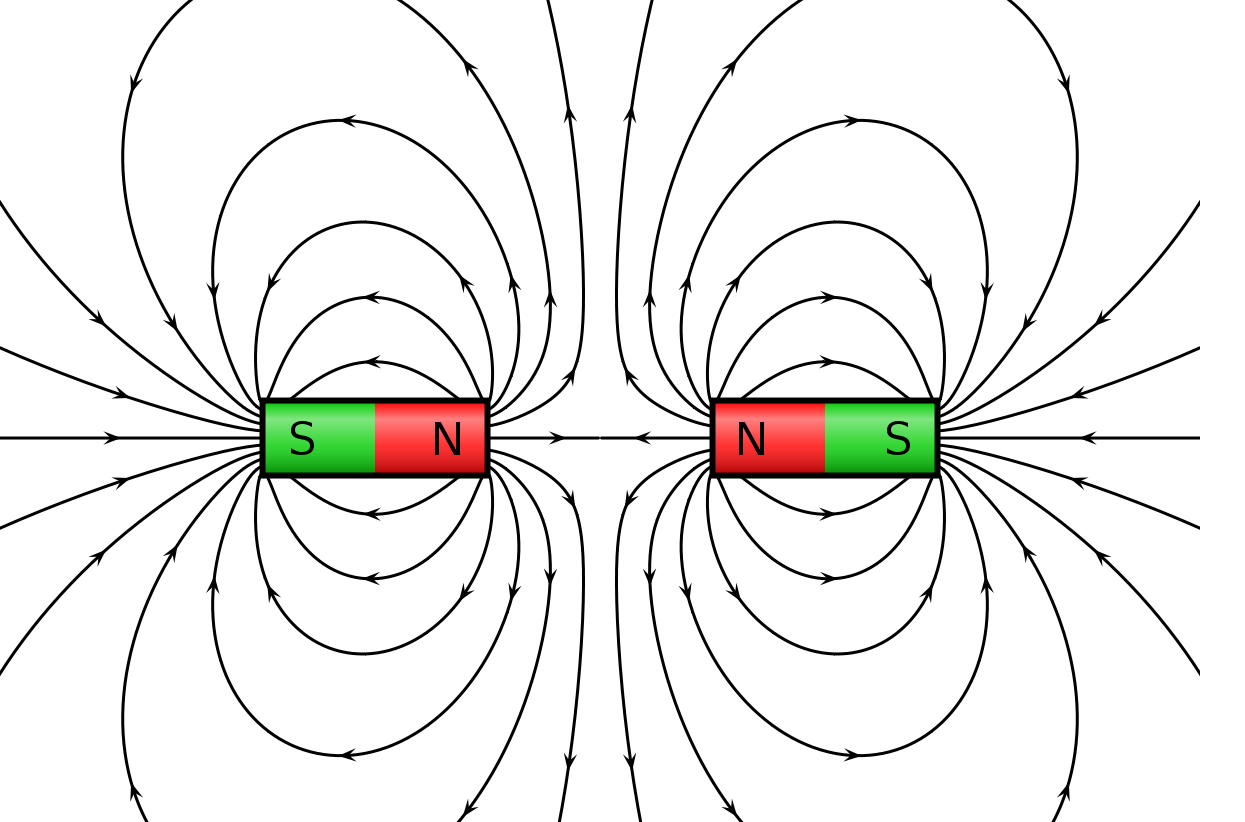
Magnetic line of force originates from ____
Answer
403.5k+ views
2 likes
Hint: Magnetic lines of force are imaginary lines representing the direction of magnetic field. The tangent at any point on the magnetic field lines represents the direction of the field vector at that point. When a small magnet is placed in between these field lines it aligns itself in the direction of these magnetic field lines.
Complete answer:
Magnetic field lines of force always emerge from the North Pole and terminate to the South Pole. The lines travel from south to north pole inside the magnet and outside they travel from south to north pole.
The lines are not real, they are imaginary. Magnetic field lines follow a curvilinear path while moving from north to south pole outside the magnet and south to north inside it. This can be seen in the following image:

They have a unique property that they never intersect though curved. Their tangents are always parallel but not intersecting. Also, they never have an end point, or a start point.
Magnetic flux is the number of magnetic field lines passing through a specific area. Magnetic induction is the number of lines passing through a unit area.
When we perform an experiment to get these imaginary magnetic field lines, we need to place a bar magnet on a sheet which has sprinkled iron fillings. They get arranged as circular lines representing magnetic field lines.
Note:
In magnets unlike charges, we get both pairs of north and south poles together at two ends. So, whenever the above experiment is performed, we could see fillings of iron arranged in such a way as if lines emerge from one end of the magnet bar and terminate to another end. Whereas in charges we could see electric lines either emerging or terminating, since they have a single charge present at a time.
Complete answer:
Magnetic field lines of force always emerge from the North Pole and terminate to the South Pole. The lines travel from south to north pole inside the magnet and outside they travel from south to north pole.
The lines are not real, they are imaginary. Magnetic field lines follow a curvilinear path while moving from north to south pole outside the magnet and south to north inside it. This can be seen in the following image:

They have a unique property that they never intersect though curved. Their tangents are always parallel but not intersecting. Also, they never have an end point, or a start point.
Magnetic flux is the number of magnetic field lines passing through a specific area. Magnetic induction is the number of lines passing through a unit area.
When we perform an experiment to get these imaginary magnetic field lines, we need to place a bar magnet on a sheet which has sprinkled iron fillings. They get arranged as circular lines representing magnetic field lines.
Note:
In magnets unlike charges, we get both pairs of north and south poles together at two ends. So, whenever the above experiment is performed, we could see fillings of iron arranged in such a way as if lines emerge from one end of the magnet bar and terminate to another end. Whereas in charges we could see electric lines either emerging or terminating, since they have a single charge present at a time.
Latest Vedantu courses for you
Grade 10 | CBSE | SCHOOL | English
Vedantu 10 CBSE Pro Course - (2025-26)
School Full course for CBSE students
₹35,000 per year
Recently Updated Pages
Master Class 12 Business Studies: Engaging Questions & Answers for Success

Master Class 12 English: Engaging Questions & Answers for Success

Master Class 12 Social Science: Engaging Questions & Answers for Success

Master Class 12 Chemistry: Engaging Questions & Answers for Success

Class 12 Question and Answer - Your Ultimate Solutions Guide

Master Class 12 Economics: Engaging Questions & Answers for Success

Trending doubts
Give 10 examples of unisexual and bisexual flowers

Draw a labelled sketch of the human eye class 12 physics CBSE

Differentiate between homogeneous and heterogeneous class 12 chemistry CBSE

Write a short note on Franklands reaction class 12 chemistry CBSE

Differentiate between insitu conservation and exsitu class 12 biology CBSE

What are the major means of transport Explain each class 12 social science CBSE




